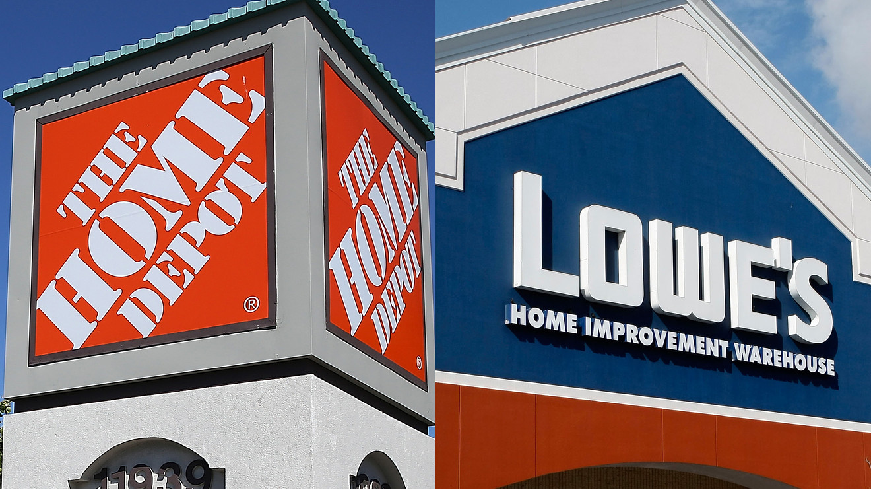As of August 21, Lowe’s (LOW) stock rose about 10 percent from the same time last year. Lowe’s sales grew 0.5 percent year-over-year to $20.99 billion in the second quarter of 2019… exceeding analysts’ expectations of $20.94 billion in sales. The company’s same-store sales grew 2.3 percent, which beat forecasts of 1.9 percent.
The Home Depot (HD) stock also surged, trading higher last week while most of the S&P 500 sank. The world’s largest home improvement retailer reported sales of $30.8 billion for the second quarter of fiscal 2019, a 1.2 percent increase from the second quarter of fiscal 2018. Comparable sales for the second quarter of fiscal 2019 were up 3 percent.
The evidence that both home improvement retail giants are experiencing real, sustained growth in 2019 should serve to strengthen conviction for building product manufacturers and contractors… that homeowners see value in keeping, maintaining and improving their homes. Unlike the recession of 2008-2009 — when consumers were abandoning properties and letting homes fall into disrepair — homeowners remain confident in their equity to leverage maintenance and improvement investments.
The signs are visible elsewhere in the market. According to the Mortgage Bankers Association, U.S. homeowners filed the most applications to refinance their current mortgages in over three years — with 30-year borrowing costs dropping to their lowest levels since November 2016. Falling mortgage rates recently boosted existing home sales to their first year-over-year gain in 17 months. The average 30-year mortgage rate is around 3.6 percent according to Freddie Mac data, which many experts believe is having a stimulating effect on the U.S. housing sector.
While some market watchers predict global decline in the wake of international trade tariffs, U.S. homeowners are spending significantly on home improvement, in terms of both increasing home comfort and resale value. At this time, the economy remains on solid ground with strong consumer spending supporting the country’s longest economic expansion (11 years and still counting). Much like the big box retailers, now is the time for building product manufacturers to expand their footprint, demonstrate to consumers opportunities and launch innovations to existing product lines.
The Kleber Critique: Lowe’s NFL partnership campaign
Earlier this year, home improvement giant Lowe’s announced it is partnering with the National Football League (NFL) to be its Official Home Improvement Retail Sponsor. In addition to exclusive merchandise, advertising and events, Lowe’s is partnering with East Coast Creative founder and YouTube DIY star Monica Mangin to create a series of videos to help football fans transform their homes for Game Day.
This looks like an easy win for Lowe’s. The NFL is a marketing and entertainment juggernaut and live sports is one of the few areas left where television advertising still makes sense. However, Lowe’s has about $10 billion less in its war chest than competitor The Home Depot and advertising with the NFL is a pricey venture. It’s important that the campaign is done right.
Lowe’s and Mangin should focus on making videos that are informative and helpful. Mangin has built a strong online following, something she has garnered by being at broker of genuinely helpful information. YouTube influencers often gain valuable community engagement with their authenticity and freedom from strict corporate directives. Lowe’s should be careful to let Mangin’s authenticity shine, rather than use her platform as a thinly veiled marketing vehicle for NFL-branded Lowe’s merchandise.
If Mangin’s videos offer real value, Lowes will score huge points with consumers. And when Lowe’s can educate and engage customers beyond Game Day, homeowners will most certainly consider fixing up the bathroom, painting their kid’s room, replacing the screen door or implementing any number of other home improvement projects.
Big-money marketing campaigns for building material manufacturers like the one Lowe’s is launching are about the long game – they need to execute well on the fundamentals of engaging consumers and providing ongoing value. Otherwise, the campaign could well wither.




